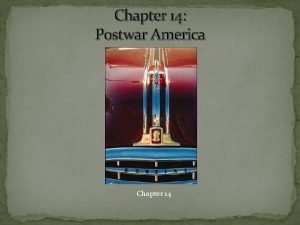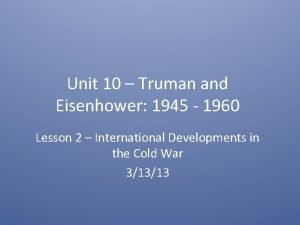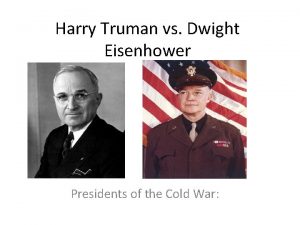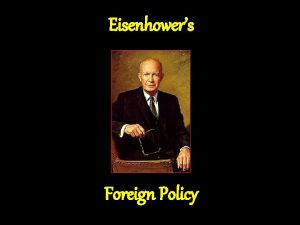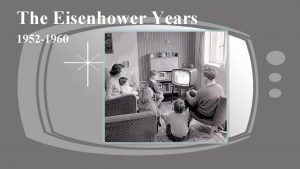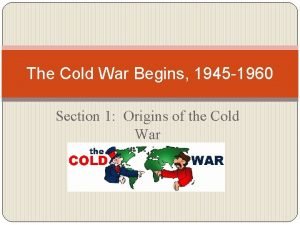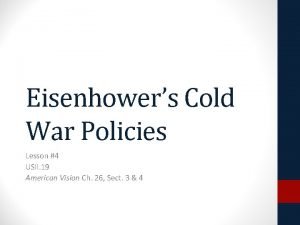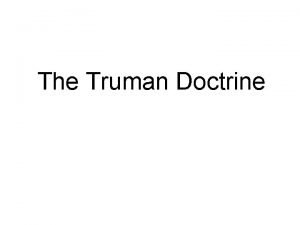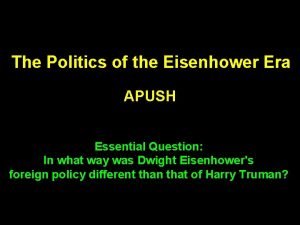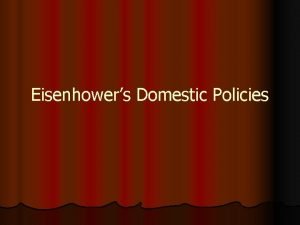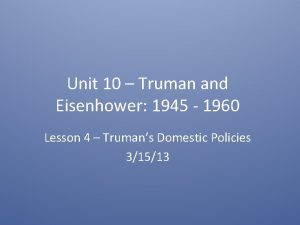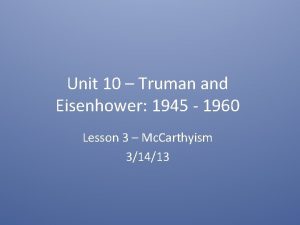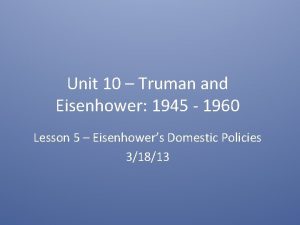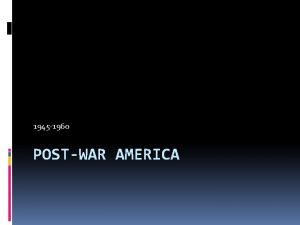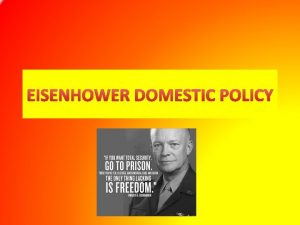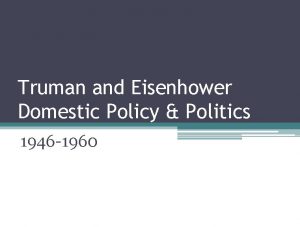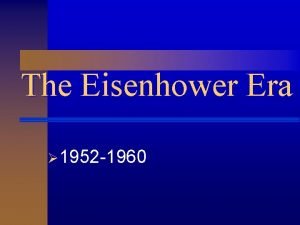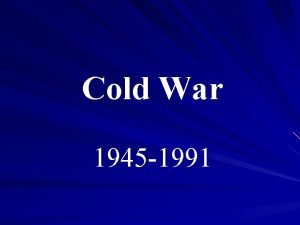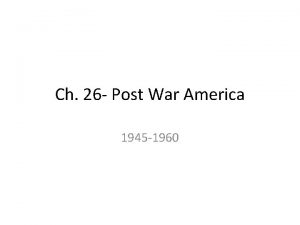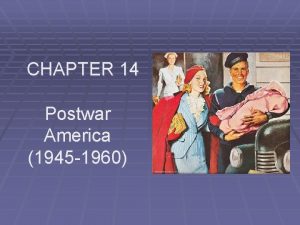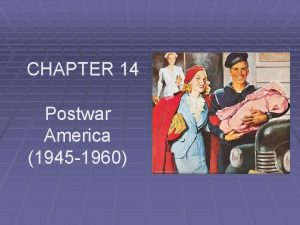Unit 10 Truman and Eisenhower 1945 1960 Lesson












- Slides: 12

Unit 10 – Truman and Eisenhower: 1945 - 1960 Lesson 2 – International Developments in the Cold War 3/13/13

Unit 10 Lesson 2: 3/13/13 Warm-Up: (1) Download this Power Point from mrvandsburger. weebly. com (2) Download the “Truman’s Foreign Policy Practice Questions” (3) Send an email to tvandsburger@uascriminaljustice. org with your answers Must be sent by 11: 08

Objective 2. SWBAT judge whether America’s involvement in early Cold War conflicts were justified.

Notes: International Developments in the Cold War I. American Involvement in International Conflicts A. USA and USSR never directly fight each other B. Participate in Proxy Wars instead 1. USSR supports pro-Communist revolutions 2. US defends pro-democracy governments C. Reinhold Niebuhr cultivates popular religious and philosophical support for anti-communist efforts

Notes: International Developments in the Cold War

Notes: International Developments in the Cold War II. Involvement in Asia A. US assumes control of the reconstruction of Japan 1. General Douglas Mac. Arthur leads the creation of a democratic constitution, demilitarization, and economic recovery B. Chinese Revolution results in victory for Mao Zedong and rise of communist system 1. US supported Chiang Kai-Shek (sometimes called Jiang Jieshi) a. Shek and Nationalist government is exiled to Taiwan C. Truman supports French against Vietnamese in first war for independence

Notes: International Developments in the Cold War

Notes: International Developments in the Cold War III. The Korean War A. Post-WWII division of Korea 1. USSR assumes control of North, USA controls South 2. Divided at 38 th Parallel B. Communist North invades South Korea 1. American troops repel invasion with support from United Nations 2. China is provoked into supporting North Korea a. Pushes American and South Korean troops back to 38 th Parallel

Notes: International Developments in the Cold War

Notes: International Developments in the Cold War

Notes: International Developments in the Cold War III. The Korean War A. General Mac. Arthur recommends war with China 1. Seeks to overthrow Communist government and reinstate Chiang Kai-Shek 2. Truman rejects idea of war with world’s largest nation 3. Mac. Arthur publicly criticizes Truman leading to his firing B. Conflict ends with Armistice signed in 1953 1. No official treaty to end war 2. North Korea remains communist 3. North Korea invalidated armistice on Monday March 11, 2013!

Independent Work: Korean War Document Analysis Steps: (1) Go to mrvandsburger. weebly. com (2) Download both the “Korean War Documents” and “Korean War Document Analysis Chart” files (3) Use the CIA method to analyze the documents and complete your chart (4) Email to Mr. Vandsburger when you are finished. Homework: • Literal and Analytical Notes p. 931 – 934, 937 – 939 • Save Power Point as “Your Name Lesson 2” and email to Mr. Vandsburger (will count as class work grade) • Finish Cold War Web Quest by Friday
 Lesson 1 truman and eisenhower
Lesson 1 truman and eisenhower Lesson 1 truman and eisenhower
Lesson 1 truman and eisenhower Truman vs eisenhower
Truman vs eisenhower Truman doctrine and marshall plan venn diagram
Truman doctrine and marshall plan venn diagram Truman foreign policy vs eisenhower
Truman foreign policy vs eisenhower The eisenhower years, 1952-1960
The eisenhower years, 1952-1960 The cold war begins 1945-1960
The cold war begins 1945-1960 Lesson 4 eisenhower's cold war policies
Lesson 4 eisenhower's cold war policies Right triangle trigonometry examples
Right triangle trigonometry examples Marshall plan and truman doctrine
Marshall plan and truman doctrine Dwight eisenhower apush
Dwight eisenhower apush Matriz de eisenhower excel baixar
Matriz de eisenhower excel baixar Eisenhowers domestic policies
Eisenhowers domestic policies
